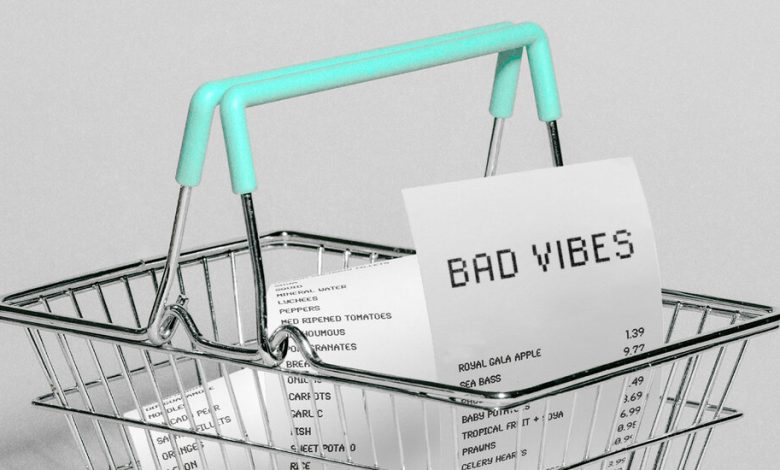Vibes, Vegetables and Vitriol

Whenever I write about falling inflation, I get a lot of comments and mail to the effect that grocery prices have doubled under President Biden and are still soaring. So a few days ago, first on social media and then in a blog post, I pointed out that they haven’t and aren’t. Here’s what the data from the Bureau of Labor Statistics looks like:
According to the bureau, prices of groceries for home consumption rose 19.6 percent between January 2021 and January 2023, then another 1.2 percent over the following year. Yes, grocery prices are up a lot, but not nearly as much as some people claim, and the big surge is behind us.
I guess that I should have expected an immense amount of vitriolic blowback, with lots of ad hominem attacks on yours truly and denunciations of the B.L.S. After all, I remember the inflation truthers of the early 2010s, who refused to believe that their predictions that easy money would cause runaway inflation had been wrong, and insisted instead that the government must be cooking the books. For whatever reason, however, the vehemence — and sheer silliness — of the grocery truthers took me by surprise.
But hey, maybe this can be a teachable moment. We’ve heard a lot about the “vibecession,” in which many people insisted that the economy must be in bad shape because it felt that way to them; part of that is vibeflation, in which people take the actual inflation we’ve experienced recently — which has indeed been disturbingly high — and, um, inflate the numbers based on their feelings about the amount they spent on groceries a few days or weeks ago.
And maybe I can use this moment to show why that’s a bad idea.
Now, I go grocery shopping myself, and am occasionally startled by the total at the cash register — although that’s usually because I wasn’t factoring in the price of that bottle of scotch I picked up along with the meat and vegetables. But I also sometimes think about what I paid for roughly the same stuff three years ago, and the truth is that I have no idea. I know that it was less, but off the top of my head I can’t tell you by what percentage. And if you say you can, forgive me for having doubts.
Still, there are people who know, just know, that the B.L.S. is greatly understating food inflation, and some of them have gone to the trouble of attacking the bureau’s methodology — or at any rate what they think is the bureau’s methodology, because the most prominent critiques seem to involve confusing the Consumer Price Index, which is estimated by regularly checking prices at the same stores, with the Consumer Expenditure Survey, which is completely different.
Still, are there any independent estimates we can use to get a second opinion on grocery prices, as a check on the B.L.S.’s credibility? Why, yes, there are.



